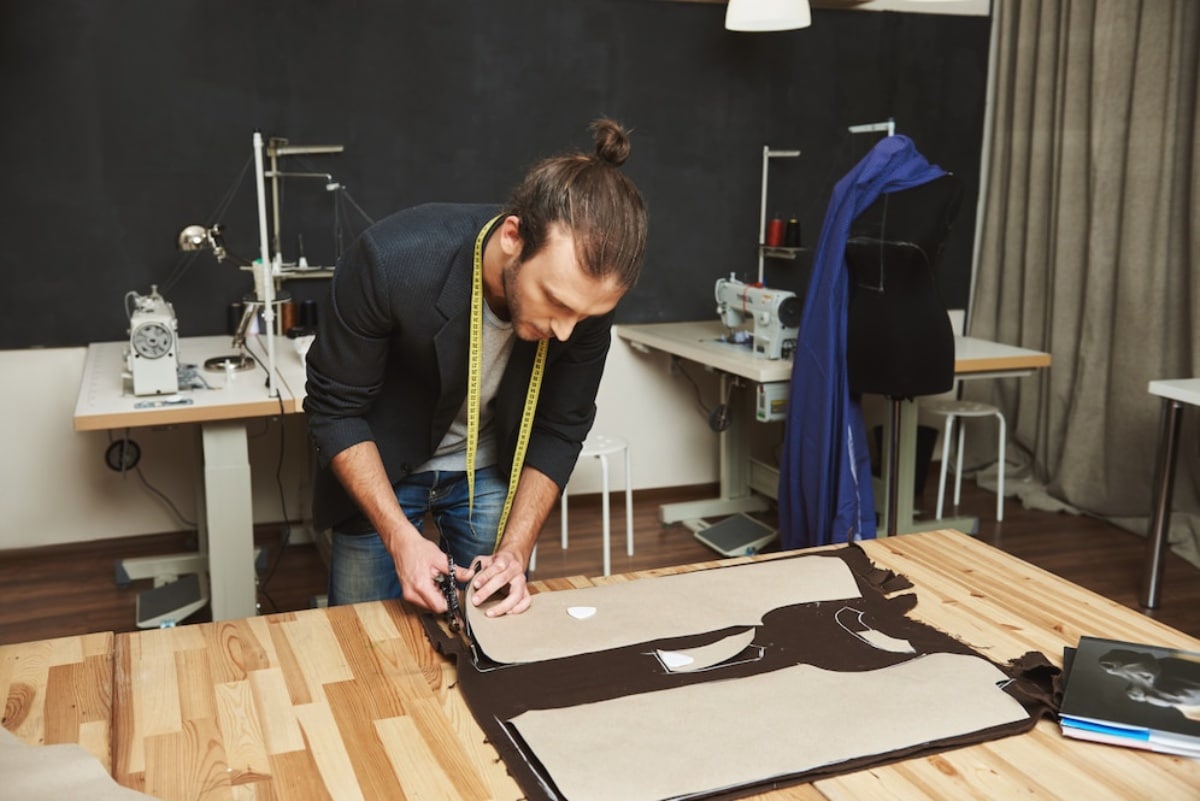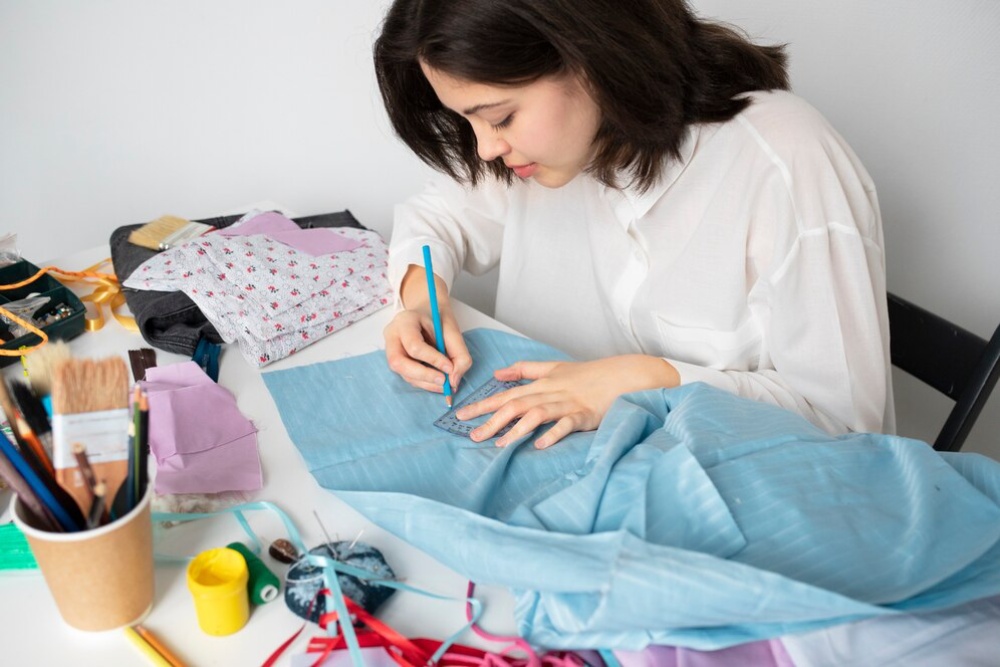
The Art of Haute Couture: Behind the Scenes of Exclusive Fashion Houses
Haute couture represents the pinnacle of fashion craftsmanship. It is where luxury, artistry, and exclusivity converge. Beyond the glamorous runway shows, haute couture is a labour-intensive process. It needs skilled artisans, intricate handwork, and meticulous attention to detail. This world of custom-fitted, one-of-a-kind creations is reserved for the elite. Yet its influence extends across the entire fashion industry.
In this article, we will take an exclusive look behind the scenes at haute couture fashion houses. Explore the design process and craftsmanship, and endure the allure of these prestigious ateliers.
What is Haute Couture?
The Meaning of Haute Couture

The term “haute couture” is French for “high sewing” or “high dressmaking.” It means custom clothes made by top fashion brands. They use the best materials and excellent craftsmanship. Haute couture is:
- Made-to-measure: Each piece is tailored precisely to the client’s measurements.
- Handcrafted: The majority of the garment is sewn by hand, with elaborate detailing.
- Exclusive: Only a select group of fashion houses in Paris are officially recognised as haute couture ateliers.
- Expensive and rare: Haute couture outfits often cost tens of thousands of dollars, with some reaching six or seven figures.
Key takeaway: Haute couture represents the epitome of luxury and exclusivity, with each piece being a wearable work of art.
The Criteria for Haute Couture

For a fashion house to be classified as “haute couture,” it must meet strict criteria set by the Chambre Syndicale de la Haute Couture in Paris:
- Custom designs: Garments must be made-to-measure for private clients.
- Exclusive atelier: The brand must have an atelier in Paris with at least 20 full-time artisans.
- Biannual collections: Fashion houses must present at least two collections per year. They showcase both day and evening wear.
- Handcrafted garments: The majority of the garment-making process must be done by hand.
Key takeaway: Only a handful of fashion houses hold the official haute couture label. These fashion houses include Chanel, Dior, and Schiaparelli,
The Design Process: From Concept to Creation
Conceptualising the Collection
Every haute couture collection begins with an artistic vision. The creative director or head designer conceptualises the collection by drawing inspiration from:
- Art and culture: Historical references, fine art, and architecture often influence designs.
- Themes and stories: Designers frequently create collections based on narratives or emotional concepts.
- Fabrics and textures: The selection of luxurious materials plays a vital role in defining the collection’s aesthetic.
Key takeaway: Haute couture design thrives on creativity, storytelling, and imagination.
Sketching and Draping
Once the concept is established, the designer and team:
- Create detailed sketches of each look, exploring silhouettes, details, and embellishments.
- Drape fabric on mannequins to test the shape and fit.
- Make a toile (a mock-up garment) from muslin or cheap fabric. This helps you refine the silhouette before working with the final material.
Key takeaway: The toile stage allows designers to refine the fit and structure before committing to expensive fabrics.
Selecting Fabrics and Embellishments
Haute couture garments use only the most luxurious fabrics sourced from speciality suppliers. These include:
- Silk, satin, and organza for fluid, elegant draping.
- Chantilly lace, tulle, and chiffon for ethereal details.
- Velvet and brocade for structured pieces.
- Hand-embroidered embellishments such as pearls, crystals, and sequins.
Key takeaway: Each garment requires hours of hand-stitching and embroidery. This results in one-of-a-kind masterpieces.
Fitting and Tailoring
Haute couture is synonymous with precise, custom tailoring. The process involves:
- Multiple fittings with the client to ensure the garment fits flawlessly.
- Adjusting and refining details by hand to achieve the perfect silhouette.
- Personalised alterations to enhance the comfort and fit of the garment.
Key takeaway: Each garment is tailored to perfection, making it unique to the wearer’s body.
The Artisans Behind Haute Couture
The Skilled Craftsmen
Haute couture garments are brought to life by exceptionally skilled artisans, including:
- Pattern makers: Create custom patterns based on the designer’s sketches.
- Seamstresses and tailors: Sew and assemble the garment by hand.
- Embroiderers and beaders: Add intricate, hand-stitched embellishments.
- Textile experts: Work with delicate fabrics to ensure proper handling and finishing.
Key takeaway: It can take hundreds of hours to complete a single couture piece due to the meticulous handwork involved.
The Role of Petit Mains
In haute couture, “petit mains” means “small hands.” This refers to the highly skilled seamstresses and tailors who work behind the scenes. These artisans:
- Hand-stitch intricate details and embellishments.
- Use traditional techniques, such as pleating, draping, and appliqué.
- Apply delicate finishing touches, ensuring each garment is flawless.
Key takeaway: The petit mains are the unsung heroes of haute couture. They preserve centuries-old craftsmanship techniques.
The Exclusive Haute Couture Clientele
The Private Client Base
Haute couture is reserved for an elite clientele, including:
- Royalty and celebrities: Couture pieces often grace red carpets and royal events.
- Wealthy collectors: Some clients purchase haute couture as investment pieces.
- Fashion connoisseurs: Individuals who appreciate the artistry and exclusivity of haute couture.
Key takeaway: Each garment is made to precisely fit the client, making it truly unique.
The Price of Exclusivity
Haute couture garments come with hefty price tags, often ranging from:
- $20,000 to $100,000 for simpler dresses.
- $500,000 or more for heavily embellished or intricate gowns.
- Million-dollar creations for custom, one-of-a-kind statement pieces.
Key takeaway: The high cost reflects the craftsmanship, exclusivity, and artistry of each piece.
The Enduring Influence of Haute Couture
Shaping Fashion Trends
Haute couture pieces are not meant for mass production. They influence ready-to-wear collections by inspiring:
- Silhouettes and cuts that are later simplified for retail.
- Fabric trends such as lace, satin, or sequins.
- Color palettes and thematic inspirations.
Key takeaway: Haute couture sets the creative direction for the entire fashion industry.
Preserving Traditional Craftsmanship
Haute couture keeps centuries-old techniques alive, including:
- Hand embroidery and beading are passed down through generations.
- Corsetry and pleating techniques are used in classical dressmaking.
- Sustainable slow fashion practices that prioritise quality over quantity.
Key takeaway: Haute couture safeguards the skill of careful craftsmanship in a world of mass production.
Haute Couture: An Inside Look at Fashion Houses

Haute couture is more than just fashion. It is art, tradition, and storytelling. The behind-the-scenes world includes exclusive ateliers, master artisans, and bespoke tailoring. This showcases the extraordinary craftsmanship that defines couture.
While most will never own a couture piece, its influence reverberates throughout the fashion industry. It shapes trends and preserves the legacy of artisanal excellence.


